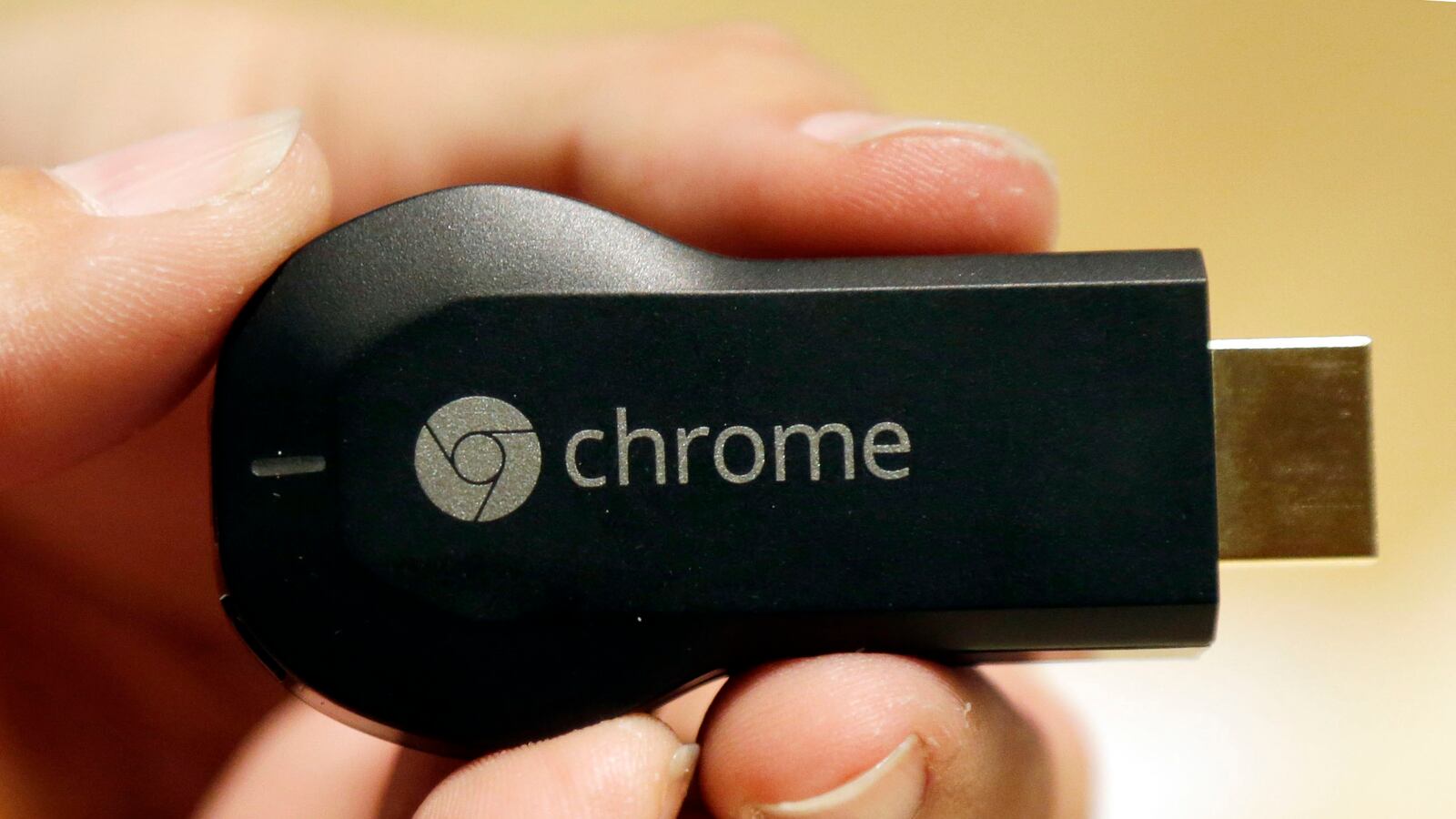I’m a cord-cutter, which means I don't have cable (by choice).
A few years back, after realizing we were paying way too much for reruns of shows readily available for a small fee on the Web, my fiancé and I called up Time Warner and canceled our cable, cold turkey. Left to scavenge for televised entertainment content using a patchwork of web apps and set-top services, we eventually settled on a home-theater package that includes a full-screen projector, surround sound, and a Roku, which works great with our go-to apps: HBO GO, Netflix, and Amazon Instant.*

We love it, but there's always been one glaring omission that never really made much sense. For the life of us, we couldn't figure out how to stream YouTube videos to the TV screen. There was no official Roku app, and an unofficial app that popped up to make YouTube streaming possible was quickly removed—booted at YouTube's request.
It turns out Google, which acquired YouTube in 2006, was working on its own solution.
On Friday the search giant held a press conference and surprised pretty much everybody by announcing a brand new, low-priced HDMI stick—a.k.a. a dongle—that enables Internet video streaming directly to one's television. Sleek, black, and about the size of a car key, the Chromecast, which plugs into the back of one's television, was immediately hailed as “Google’s miracle device,” “the future of TV,” and an “Apple-TV killer” by technology websites.
Available at the über-affordable price point of $35, it sold out in the company’s online store within minutes.
I was lucky enough to snag one to take for a spin at home. Thanks to Amazon, it was delivered the following day.
The pitch for the Chromecast is simple. It’s “the easiest way to watch online video on your TV,” and it says so right on the box.
Setting it up on your dumb TV to make it smarter is even easier.
To get things up and going I had to complete three steps. First, I plugged the 3-inch dongle into the HDMI input on the back of my TV, and plugged it into its power source. (That immediately rendered the product's marketing shots inauthentic at best—think phone charger meets flash drive). I then switched the television's input to the Chromecast, and installed the app on my computer, and its corresponding extension in Google Chrome, which allows me to send the videos from my browser directly to the TV. An app on the iPhone does the same.
After a brief automated setup process, we were live.
I opted for a live performance from my favorite band for the first video streamed from YouTube, and it worked like a charm. The image quality was fairly decent, but not HD (I opted for 720p, but users can choose between 720p high bitrate, 720p, and 480p for lower Internet speeds), and the audio was crystal clear.
I then jumped over to Netflix.com to stream an episode of Discovery Channel's Dirty Jobs. Like YouTube, it worked great. There were no headaches, and Mike Rowe was as dirty as ever.
But when I tried to "cast a tab," as the action of sending a browser tab to the big screen is called, I hit a speed bump. The screen was incredibly pixelated, which meant only the Google logo was identifiable on the search engine's homepage. The Chromecast extension offered a few explanations for the problem—try plugging in your computer, exit other applications, or try reducing the video quality—but none seemed to work.
I can't be too upset.
Google does offer a note of caution on its support page, saying that tab-casting is a feature that is currently in beta, and a big fat "BETA" button can be spotted in the Chromecast extension itself. This means, more or less, that they're working on it.
Out of the gate, the dongle currently supports just three major video platforms: YouTube, Netflix, and Google Play. Sensing an opportunity, a number of media companies on Monday promised more are on the way. Vimeo, Plex, and Redbox Instant are said to be coming out with Chromecast support in the near future, and HBO GO, Songza, and Revision3 are all reportedly in various stages of testing.
Google's hot new dongle won't wind up being a Roku replacement in my house. That's a tough gig to get—my Roku's been good to me. It may wind up filling in as more of a utility home-theater infielder for those times when I just want to queue up a YouTube video and project it on the wall.
And at $35, it's well worth picking up the product's first version, especially if you don't already have a smart set-top device like Roku or Apple TV. Even if you do, it's worth having access to YouTube's endless supply of videos. For a cord-cutter, that's money well spent.
*Update: A reader sent me an email asking how HBO GO on the Roku is possible when I've cut the cord, as the company requires a cable subscription to use the app. He's got a very good point. It's not. I may or may not be using a friend's log-in to stream the occasional documentary. So, yes, as the reader notes, you can cut the HBO cord but only so long as somebody else doesn't.




